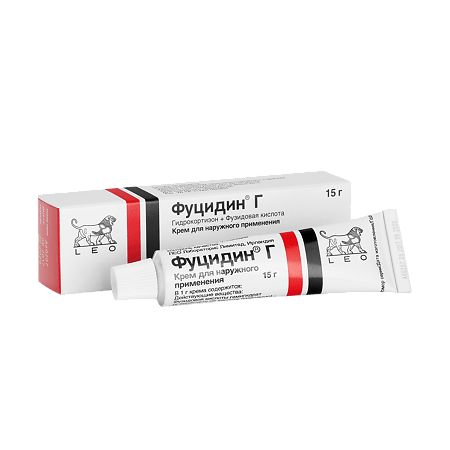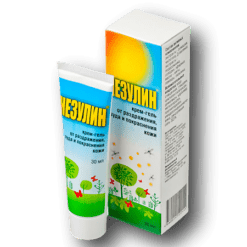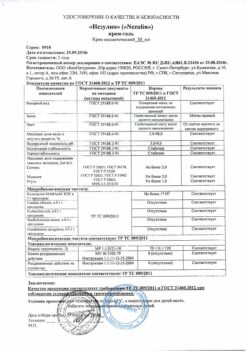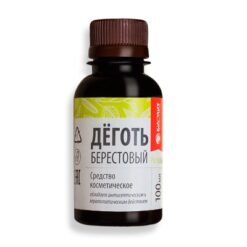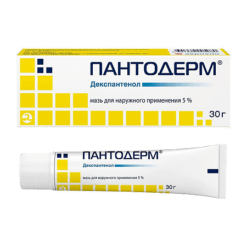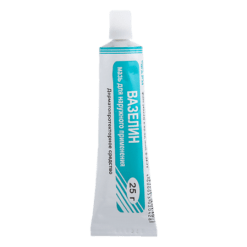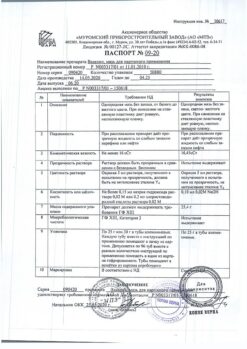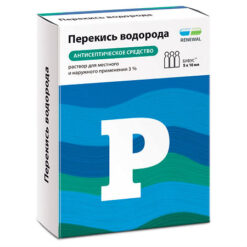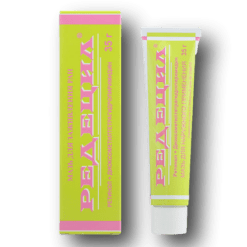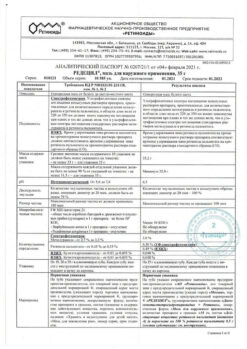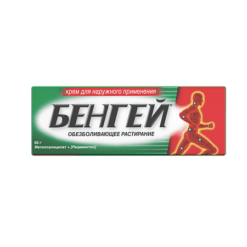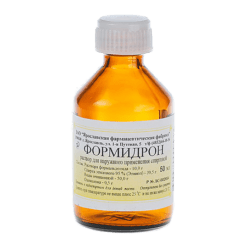No products in the cart.
Fucidin G, cream 15 g
€1.00
Out of stock
(E-mail when Stock is available)
Description
Pharmacodynamics
Fucidin G is a combined drug for external use. It combines the anti-inflammatory and antipruritic action of hydrocortisone with the antibacterial action of fusidic acid. Highly active against Staphylococcus spp. especially Staphylococcus aureus and Staphylococcus epidermidis (including methicillin-resistant strains), Streptococcus spp, Neisseria spp., Clostridium spp., Nocardia asteroides, Enterococcus spp., Bacteroides spp., Mycobacterium tuberculosis, Mycobacterium leprae and Corynebacterium minutissimum. Antibacterial activity of fusidic acid is not reduced in the presence of hydrocortisone.
Pharmacokinetics
The skin is penetrated by 2% of the active substances of the applied amount of the drug. When applied externally, systemic absorption is low.
Fusidic acid. It is excreted mainly with the bile, and only a small amount is excreted with the urine.
Hydrocortisone. Absorbed hydrocortisone is rapidly metabolized and excreted in the urine.
Indications
Indications
Treatment of atopic dermatitis with infectious complications caused by pathogens sensitive to fusidic acid.
Active ingredient
Active ingredient
Composition
Composition
1 g of cream for external use contains:
Active substances:
fusidic acid hemihydrate (in terms of acid anhydrous) 20 mg,
hydrocortisone acetate 10 mg,
Associates:
butyl hydroxyanisole, 0.04 mg;
cetyl alcohol, 111 mg;
glycerol 85%, 111 mg;
liquid paraffin (contains about 10 ppm alpha-tocopherol) – 111 mg;
potassium sorbate – 2.7 mg;
Polysorbate 60 – 56 mg;
White paraffin (contains about 10 ppm alpha-tocopherol) – 56 mg;
3M hydrochloric acid (maximum amount) – 3 mg;
purified water – 519.6 mg
How to take, the dosage
How to take, the dosage
Externally. Adults and children over 2 years.
Apply to the affected area of the skin in a thin layer 3 times a day. The course of treatment is 2 weeks.
Special Instructions
Special Instructions
Avoid contact of Fucidin G cream with open wounds and mucous membranes. Use with caution in the vicinity of the eyes as contact with the eyes may cause glaucoma.
Long-term topical use of GCS should be avoided because it can lead to suppression of adrenal function even with low systemic absorption. Atrophic changes may occur on the face and, to a lesser extent, on other parts of the body after prolonged topical treatment with GCS.
Fucidin G cream contains butyl hydroxyanisole and cetyl alcohol, which may cause localized skin reactions (such as contact dermatitis). Butylhydroxyanisole may also irritate the eyes and mucous membranes.
Fusidic acid, like all antibiotics, may increase the risk of antibiotic resistance with prolonged or repeated use. The use of fixed combinations of GCS with antibiotic should not exceed 2 weeks, because GCS may mask the symptoms of infection or hypersensitivity reactions. If bacterial infection persists, treatment with systemic drugs should be initiated.
Impact on the ability to drive vehicles and operate mechanisms. No effect on the ability to drive vehicles and operate mechanisms has been identified.
Contraindications
Contraindications
Hypersensitivity to fusidic acid/fusidate sodium, hydrocortisone acetate or other components of Fucidin G.
Because of the GCS content, the following conditions and diseases:
Side effects
Side effects
Below are data on adverse reactions, depending on the frequency of occurrence: very common – â¥1/10; common – â¥1/100,
Immune system disorders: very rare – systemic allergic reactions.
Skin and subcutaneous tissue disorders: infrequent – skin irritation, burning sensation, tingling sensation at the site of application; frequency unknown – rash, allergic contact dermatitis, depigmentation.
Associated with GCS: cutaneous atrophy, telangiectasia and stretch marks (especially with long-term use), folliculitis, hypertrichosis, perioral dermatitis, allergic contact dermatitis, depigmentation and suppression of the adrenal cortex.
Overdose
Overdose
Pregnancy use
Pregnancy use
Preclinical studies and long-term clinical experience indicate the absence of embryotoxic and teratogenic effects of fusidic acid. Topical use of corticosteroids in pregnant animals led to fetal abnormalities, although the significance of this phenomenon in humans is unclear.
The data obtained during pregnancy show no serious adverse effects on the fetus or the newborn. However, excessive use (i.e., for prolonged periods or in amounts greater than 100 g per week) of Fucidin G cream is not recommended during pregnancy because of the presence of hydrocortisone.
In external use with fusidic acid and hydrocortisone acetate penetration into breast milk is unlikely due to low systemic adsorption and no effect on breastfed children is expected. Fucidin G cream may be administered during breastfeeding; however, if applied externally to the nipple skin, the nipple surface should be thoroughly cleaned of any traces of the cream before breastfeeding.
Additional information
| Weight | 0.024 kg |
|---|---|
| Shelf life | 3 years. |
| Conditions of storage | At a temperature not exceeding 25 °C. |
| Manufacturer | LEO Laboratories Limited, Ireland |
| Medication form | exterior cream |
| Brand | LEO Laboratories Limited |
Related products
Buy Fucidin G, cream 15 g with delivery to USA, UK, Europe and over 120 other countries.

